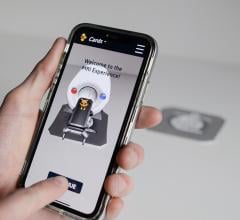
Rainer Dronzek
ACT: What are some of the scenarios — decisions or investments — in which a hospital might want to consider doing a simulation model first?
Rainer Dronzek: It can really span from upfront in the facility design to when they are actually designing the processes that go into the facility — then there is the actual operational aspect. In many cases we get called because there is a bottleneck or a specific problem to solve.
The first thing would be in the design stage of a new facility — how big do I need to make the box? Then you’ll need to figure out the best way to operationalize staff and patient processes, or it could also be equipment — making sure that you have enough capacity to handle a certain volume.
Whether it’s a process change or facility renovation, you can use the model to predict the impact of a change. If you have $100,000, what is the best thing to do with it? Do you do a facility modification, do you buy some new equipment, do you do something with staff, or if you’re affecting all three of those areas, what would be the mix for allocating the funding? The simulation will help quantify what that predicted outcome will be.
ACT: When would you not recommend doing a simulation?
RD: One of the things with simulations, just the technology in general, is that it requires a repeatable process. We can't model chaos. Our challenge within healthcare is to make sure that we are being honest with the customer and saying, “You may not need a simulation right now — you might just need a little bit of housekeeping to get your processes in order, and once you do that we can come back and use the model as a better analysis tool.”
ACT: What should the hospital administration or department head be prepared to provide to the simulation consultants at the beginning of the process?
RD: First, it is nice when the hospital can provide either a single person or a team that serves as the primary contact for gathering data. We draw from many different areas of the hospital to get the data needed for creating a model — it helps when somebody inside the hospital plays the role of facilitator.
From there it’s up to the hospital how much time they want to spend versus off-loading that responsibility to whoever is coming in to do the simulation study. If the hospital decides to collect all the data, they don't get the benefit of the outside view and the guidance that the simulationist could provide. By the same token, if you just throw somebody into a hospital and say, “Go get the data,” they’re going to spend a lot of time trying to figure out where it is and who are the right people to talk to.
ACT: How far in advance should the hospital bring in a simulation consulting company?
RD: I would have to say that 75 percent of the time when we have completed a successful project and the customer has embraced the technology, they'll say, “I wish I would have had you earlier when we first started looking at the process, or whatever the case might be. I guess the underlying guideline is: Begin as early as possible.
When you are talking about a consultant, they would appreciate coming in earlier and it may even be from a sales level. Just have somebody come in and give you a sales pitch on what they can do for you today versus what they can do for you six months from now when the wheels are already in motion.
ACT: Simulation modeling really started getting recognized in healthcare as a valuable tool in the mid ‘90s — what helped propel the technology in this industry?
RD: As soon as we started going to laptops and the applications began providing animation, I think there was a quantum leap in the interest and understanding of what the technology does. Probably in the late ‘90s is where we really saw a lot of momentum.
You really don't need to have animation to conduct the simulation study, but what we find is that it is so useful not only in validating the model, but getting the idea across of what the simulation actually is doing. I think animation is very beneficial within the healthcare industry, and that may have been one of the reasons we saw this increased awareness of what simulation is — we were able to show them, in an animated fashion, what the simulations are doing.
ACT: How could simulation modeling help with disaster or emergency planning for the enterprise?
RD: In many cases, simulation is the only quantifiable method to understand how a system reacts or responds to an emergency.
Think about a large explosion that injures thousands of people — I know hospitals do live simulations of that when they can, but it is a huge undertaking. And they can't always simulate exactly what is going to happen. It is more of an approximation.
A model would be the ideal way to do some of that up-front, what-if analysis that could drive you to a very robust plan. We can model things that are very difficult, such as large influxes of patients and different kinds of patients depending on the things that are happening — they might have different specific needs based on their acuity or type of injury. We can also look at equipment failure, the ambulance system response and then the overall metropolitan response to a disaster.


 December 19, 2019
December 19, 2019 







